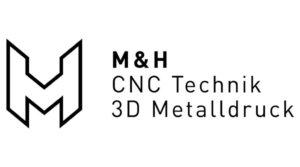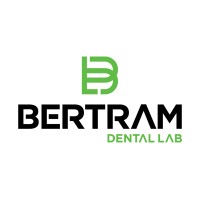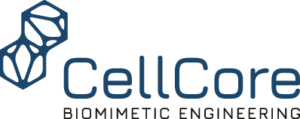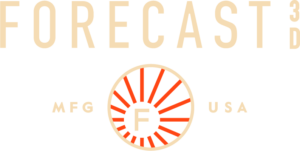SLM® Multi-laser systems provide manufacturers the environment to build components at a faster rate. Reduce production time, increase machine uptime and cut cost by 45%.
Patented bi-directional powder recoating helps reduce manufacturing time by depositing new layer of powder in both directions without having to return to a “home” position. Machine uptime is increased, gas flow is stabilized and consumable costs are reduced, all while increasing safety.
The patented, enhanced gas flow, flowing through a sintered wall, creates a clean process environment to increase build quality, and also reduces gas consumption, reducing operating cost.
Powder transport, sieving and storage is contained within a closed-loop, inert gas atmosphere to maintain material quality
Paired with a Powder Sieving Machine (PSM), the SLM®280 offers material flexibility. Manual sieves allow efficient material changeover for adaptable production while maintaining safety and quality.
The automated Powder Supply Vacuum (PSV) uses independent routes to supply sieved powder directly to the SLM®280, return overflow during a build and allows unpacking through a glove box sending powder back to the PSV at the completion the process for closed-loop powder handling.
All SLM® systems allow the use of materials from any supplier. The integrated SLM® Build Processor and open software architecture offer the freedom to run standard parameters or optimize them to meet specific production needs and gain a competitive advantage.
SLM Solutions offers expert know-how that drives unique specifications to assure mechanical properties through the combination of machine, parameters and powder audited for composition, quality, and flowability.
In addition, refined parameters and an identical optical bench allow processes to be directly transferred to other machines, such as scaling up to the SLM®500.
Metal 3D printing with multiple lasers and closed-loop powder handling. The SLM®280 2.0 is ideal for medium to high volume metal additive manufacturing part production and prototypes.
Manufacturers have the ability to customise the number of lasers as well as its power
Multi-material
Build Envelope (L x W x H): | 280 x 280 x 365 mm |
3D Optics Configuration: | Single (1x 400 W or 1x 700 W) IPG fiber laser Twin (2x 400 W or 2x 700 W) IPG fiber laser |
Build Rate: | 88 cm³/h (400 W Twin) |
Variable Layer Thickness: | 20 µm – 75 µm |
Minimum Feature Size: | 150 µm |
Beam Focus Diameter: | 80 µm – 115 µm |
Maximum Scan Speed: | 10 m/s |
Average Inert Gas Consumption in Process: | 2.5 l/min (argon) |
Average Inert Gas Consumption Purging: | 70 l/min (argon) |
E-Connection / Power Input: | 400 Volt 3NPE, 63 A, 50/60 Hz, 3.5-5.5 kW |
Compressed Air Requirement / Consumption: | ISO 8573-1:2010 [1:4:1], 50 l/min @ 6 bar |
Dimensions (L x W x H): | 2600 mm x 1200 mm x 2760 mm |
Weight: | 1300 kg dry |
Third-generation machine designed for production environments. Featuring multiple lasers, closed-loop powder handling and upgraded process control ideal for demanding applications
Manufacturers have the ability to customise the number of lasers as well as its power
Permanent filter
Technical Specifications
Build Envelope (L x W x H): | 280 x 280 x 365 mm |
3D Optics Configuration: | Single (1x 400 W or 1x 700 W) IPG fiber laser Twin (2x 400 W or 2x 700 W) IPG fiber laser Dual (1x 700 W and 1x 1000 W) IPG fiber laser |
Build Rate: | up to 113 cm³/h (Twin 700 W) |
Variable Layer Thickness: | 20 µm – 90 µm (more upon request) |
Minimum Feature Size: | 150 µm |
Beam Focus Diameter: | 80 µm – 115 µm |
Maximum Scan Speed: | 10 m/s |
Average Inert Gas Consumption in Process: | 13 l/min (argon) |
Average Inert Gas Consumption Purging: | 160 l/min (argon) |
E-Connection / Power Input: | 400 Volt 3NPE, 63 A, 50/60 Hz, 3.5-5.5 kW |
Compressed Air Requirement / Consumption: | ISO 8573-1:2010 [1:4:1], 60 l/min @ 6 bar |
Dimensions (L x W x H): | 4150 mm x 1200 mm x 2525 mm (includes PSV) |
Weight: | 1700 kg dry |
The PSM unit sieves and separates metal powder under inert gas conditions. Metal powder collected from overflow cans in the selective laser melting system is manually supplied to the sieving station. The sieved GO grain and oversized powder are collected in separate cans underneath the system for further use.
The sieving process runs automatically without influence on the running build process, reducing ancillary times. To support and speed up the sieving procedure, an additional ultrasonic cleaning device can be added.
Tool for visualizing thermal emission of melt pool in the SLM®process. The system records the thermal radiation produced from the melt during the entire production process.
Permanent on-axis laser power monitoring system that measures and illustrates nominal and actual power during the ongoing manufacturing process.
Developed to simplify cleaning, maintenance and installation work on the SLM®Recoater.
Tool to level recoater height and adjust overlap area. Enables reproducible adjustments to the recoating lip height, independent from operator, within 1 μm. Resulting in recoating and the laser exposure level consistency for each build job
Substrate plates with parts up to 180kg can be easily removed from the process chamber with the Build Plate Handling Device.
SLM Solutions provides a range of high quality powders and unique parameter sets to guarantee SLM® machines are able to meet your production needs at peak performance. Because the properties of the metal powder utilized by SLM® machines affect the achievable results, SLM Solutions established a powder division since 2016 to supply customers with materials that ideally fit selective laser melting machines for qualified serial production. The raw of the selective laser melting process is spherical metal powder, usually in a nominal particle size distribution of 10 – 45 or 20 – 63 µm. Our open architecture systems are thereby open for your individual adjustments and alloy developments.









